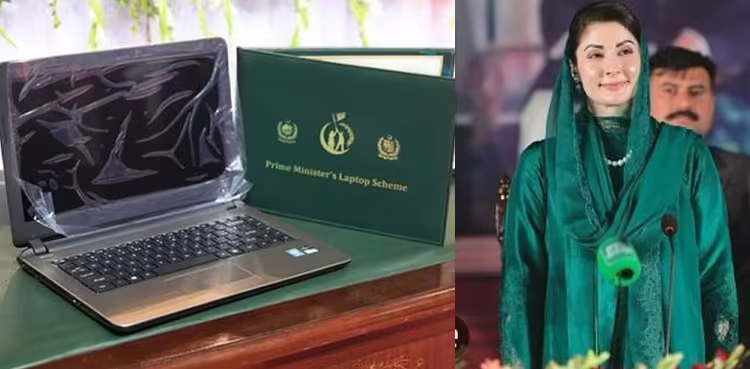PM Laptop Scheme 2025: A Complete Guide to Eligibility, Application & Impact

In our modern world, digital connectivity and information technology define progress. For students, a personal computer is no longer a luxury—it’s an essential tool for learning. The Government of Pakistan recognizes this urgent need. Therefore, it plans to restart a flagship initiative: the PM Laptop Scheme. While we await an official announcement for the 2025 phase, excitement is already growing among students nationwide.
This article goes beyond the rumors. It serves as a strategic guide for ambitious students and their families across Pakistan. We will explore the scheme’s background, predicted eligibility, a clear application walkthrough, and its powerful impact. We’ll also show you how to get ready for the launch. Consider this your complete roadmap, from start to finish.
A Legacy of Digital Empowerment: Understanding the “Why”
First, let’s look back to understand the future. The PM Laptop Scheme isn’t new. The PML-N government first launched it, and it quickly became one of the most popular youth welfare projects.
The program has several main goals:
The Four Main Goals of the Scheme
- Bridge the Digital Divide: Pakistan has significant economic gaps. This scheme aims to level the playing field. It ensures a talented student from a remote village in Balochistan or a low-income neighborhood in Karachi can access the same digital tools as anyone else.
- Boost Academic Research: A laptop opens the door to global knowledge. Students can access online journals, research papers, and educational software, which dramatically improves their learning and research quality.
- Build Technical Skills: Today’s job market demands digital literacy. By giving students laptops, the scheme naturally teaches them software use, online communication, and digital problem-solving.
- Stimulate the Economy: An educated, tech-savvy youth population is Pakistan’s greatest asset. This initiative invests directly in human capital, building a future workforce that can drive innovation and compete globally.
People largely considered the previous phases a success, as they distributed hundreds of thousands of laptops. Consequently, the 2025 scheme will likely be a more polished and expanded version of this successful program.
Anticipated Eligibility Criteria for PM Laptop Scheme 2025
The Higher Education Commission (HEC) will release the official criteria, as it traditionally runs the scheme. However, we can make solid predictions based on past phases. The eligibility rules are typically strict and merit-based.
You will likely need to meet these requirements:
- Academic Status: You must be a current student at a public sector Higher Education Institution (HEI) that the HEC recognizes.
- Degree Level: The scheme usually includes students in Bachelor’s, Master’s, M.Phil., and Ph.D. programs. It may or may not include diploma students.
- Academic Performance: This is the most important filter. You will likely need a minimum CGPA of 3.0 or higher from your most recent semester. Remember, higher grades increase your chances.
- Financial Need: The scheme often prioritizes students from lower-income families, even if not explicitly stated. It may use data from the Benazir Income Support Programme (BISP) for this.
- First-Time Recipients: If you received a laptop from any earlier phase of this scheme, you will probably not be eligible.
- Nationality: You must be a Pakistani citizen.
Who Might Miss Out?
Historically, the scheme has not included students from private universities or those studying at the intermediate (FA/F.Sc) level and below. This focus on higher education will likely continue.
The Projected Application Process: A Step-by-Step Guide
The government designs the process to be transparent and online, which helps minimize bias. Here is how it will probably work:
Step 1: Official Announcement and Portal Launch
The HEC will first make an official announcement. Then, it will activate a dedicated web portal, likely pm.laptop.gov.pk. Students must stay alert and only use this official website to avoid scams.
Step 2: Student Registration
Next, eligible students must:
- Visit the official portal.
- Enter their personal details (Name, CNIC Number, Mobile Number).
- Provide academic information (University Name, Degree Program, Roll Number).
- Finally, create a secure username and password.
Step 3: Filling the Online Application Form
This is the most critical step. You must carefully complete all fields with:
- Accurate personal and contact information.
- Detailed and correct academic records (CGPA, current enrollment).
- Your bank account details (IBAN) for verification.
Step 4: Data Verification by Universities
At this stage, your university checks your application. A designated official will cross-reference your submitted data with the university’s records. Crucially, any discrepancy will lead to immediate disqualification.
Step 5: Merit List Creation
After verification, the HEC creates a central merit list. The primary ranking factor is almost always academic performance (CGPA). The system may use separate quotas for different provinces and degree levels to ensure fair distribution.
Step 6: Shortlisting and Distribution
The scheme will notify shortlisted students via SMS and email. Afterwards, the government will distribute laptops through ceremonies at universities or regional centers.
The Ripple Effect: How a Single Laptop Can Transform a Future
This scheme’s impact goes far beyond the device itself. It acts as a catalyst for change.
- For the Student: It means you can write assignments, write code, conduct research, and attend online lectures from your home or hostel. As a result, you save money on cybercafe fees and gain the privacy to learn effectively.
- For Universities: Campuses see a direct rise in the quality of projects, theses, and research. Essentially, it integrates technology directly into the heart of the learning ecosystem.
- For Pakistan: This is a strategic national investment. It creates a pipeline of skilled graduates ready for fields like IT, engineering, and data science. Therefore, it directly fuels the “Digital Pakistan” vision, encouraging entrepreneurship and a stronger knowledge-based economy.
A Word of Caution: Avoiding Scams and Staying Informed
However, with high anticipation comes risk. Please remember:
- The government will never ask for payment over the phone for this scheme.
- Never share your OTP, CNIC, or portal passwords with anyone.
- Only trust information from the official HEC website (
hec.gov.pk) and the designated laptop portal. - Furthermore, beware of social media pages, WhatsApp messages, or people who “guarantee” a laptop for a fee. These are always scams.
Looking Ahead: The Road to 2025
In conclusion, the PM Laptop Scheme 2025 represents more than a hardware handout. It is a powerful statement—a commitment to empowering the youth, the true architects of Pakistan’s future.
As we wait for the formal launch, our advice is simple: Focus on your studies. Excel in your academics because your grades will be your strongest ticket into this program. Meanwhile, keep your university records updated and stay informed through official channels.
At Paknovate, we believe in a future where every Pakistani student has the tools to innovate, create, and lead. The PM Laptop Scheme 2025 is a monumental step toward turning that belief into a reality.




One thought on “PM Laptop Scheme 2025: A Complete Guide to Eligibility, Application & Impact”